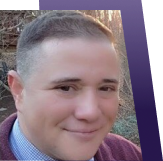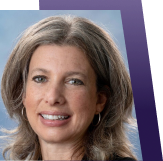ntroduction
The National Academies Standing Committee on Reproductive Health, Equity, and Society and the Committee on Human Rights co-hosted a webinar on December 11, 2023, during which expert panelists discussed long-standing concerns regarding harassment, threats, and physical attacks against health care professionals working to provide essential sexual and reproductive health care. This webinar, supported by the National Academy of Sciences W.K. Kellogg Foundation Fund, was part of a series on reproductive health topics.
Violence and Harassment Against Health Professionals Providing Reproductive Care
- Clinicians around the world have been harassed, arrested, surveilled, demoted, and fired for providing abortion care and advocating for patients’ rights. (Shah)
- Violence by anti-abortion extremists has often intersected with a legacy of racism, antisemitism, and white supremacy in the United States. (Davidson)
- Since 1977 in the United States, there have been 11 murders, 42 bombings, 200 arsons, 531 assaults, 492 clinic invasions, 375 burglaries, and thousands of other incidents of criminal activities directed at patients, providers, and volunteers. (Davidson)
- The Internet has become the newest battleground for anti-abortion violence, with online death threats, doxing, and other threats of harm having skyrocketed in the past decade. (Cohen)
- Following the Dobbs decision and subsequent state-level abortion bans, many anti-abortion extremists have traveled to states where abortion remains legal to target clinics there. (Davidson)
- In 2022, increases in major incidents like arsons, burglaries, death threats, and invasions were reported overall, with a sharp increase in states that are protective of abortion rights. (Davidson)
Insights on the Legal Framework
- Laws restricting access to abortion and the harassment providers face can impact their ability to practice medicine and create long-term impacts on health care, exacerbating disparities in health care. (Shah)
- While most countries are amending their laws, in recognition of the harm caused by the criminalization of abortion, the United States is one of only four countries that has recently moved to restrict abortion. (Shah)
- Some states have steep criminal laws governing abortion, provisions that can include significant monetary penalties and lengthy prison sentences. (Beasley)
- The FACE Act has successfully prevented most large clinic blockades but not other forms of harassment, largely due to enforcement issues and fear that the police will be taking sides in a political debate if they enforce this law. (Cohen)
- California, Colorado, Massachusetts, New Jersey, New York, Oregon, and Vermont have expanded Safe at Home laws to include abortion providers and seekers. (Cohen)
Effects of Violence on the Health and Well-Being of Providers
- A key strategy against abortion access around the world is fear, including utilizing the law and harsh criminal penalties to implicitly impose bans on abortion, even where the law allows for life-saving care. (Shah)
- Trauma and a climate of fear have led to system level burnout and health care deserts. (Harris)
- The targeted harassment of health professionals providing reproductive care at home and at work sends a clear message that providers have to be constantly vigilant about their personal safety and privacy. (Cohen)
- Relatives, neighbors, and colleagues can also become targets of this harassment in order to intimidate and indirectly harass the provider. (Cohen)
- Clinicians are being put in an untenable situation of dual loyalty, in which they are unable to both avoid grave legal risk and adhere to medical standards of care and medical ethics. (Shah)
Mitigating and Preventing Violence and Harassment
- The National Abortion Federation provides resources to abortion providers and facilities to help keep staff and their patients safe, including staff preparedness trainings, facility and residential security assessments, and law enforcement assistance. (Davidson)
- Research highlights the importance of health professionals’ voices in breaking stigma- silence cycles and depolarizing abortion, which can lead to more support for abortion access. (Harris)
- Institutions need to support and facilitate the voice of health professionals in their employment and not discourage them from speaking out on access to abortion. (Harris)
- Careful audience research needs to be conducted to develop evidence-based communication recommendations, so providers understand the impact of their voice. (Harris)
- Enhanced training for law enforcement would be beneficial; in many cases when an incident occurs, the burden is on providers to identify the ordinance that has been violated and push law enforcement to investigate. (Davidson)
- There is a lot to learn from dialogue with other clinicians from around the world who have, for decades, faced violence and harassment for providing abortion care. (Shah)
- By using a maternal mortality and health equity framework, along with an outcomes-based approach, the message can be amplified that abortion care is health care. (Lappen)
Many of the panelists emphasized the importance of connecting the dots on why abortion care is health care and, by denying or limiting that care, what the long-term impact will be on health care and health disparities (Harris, Beasley, Cohen, Lappen, Shah). Furthermore, some panelists stressed the need to push back on the normalization of violence by telling providers’ stories (Harris, Shah) and highlighting the implications of being forced to deny an abortion from the perspective of professional ethics and the principle of do no harm (Beasley, Shah). Dr. Harris stressed the need for empathy for people who have internal conflict or ambivalence about abortion to help depolarize this issue and mitigate and prevent violence against health professionals providing reproductive care. Harassment and Violence Against Health Professionals Who Provide Reproductive



No comments:
Post a Comment